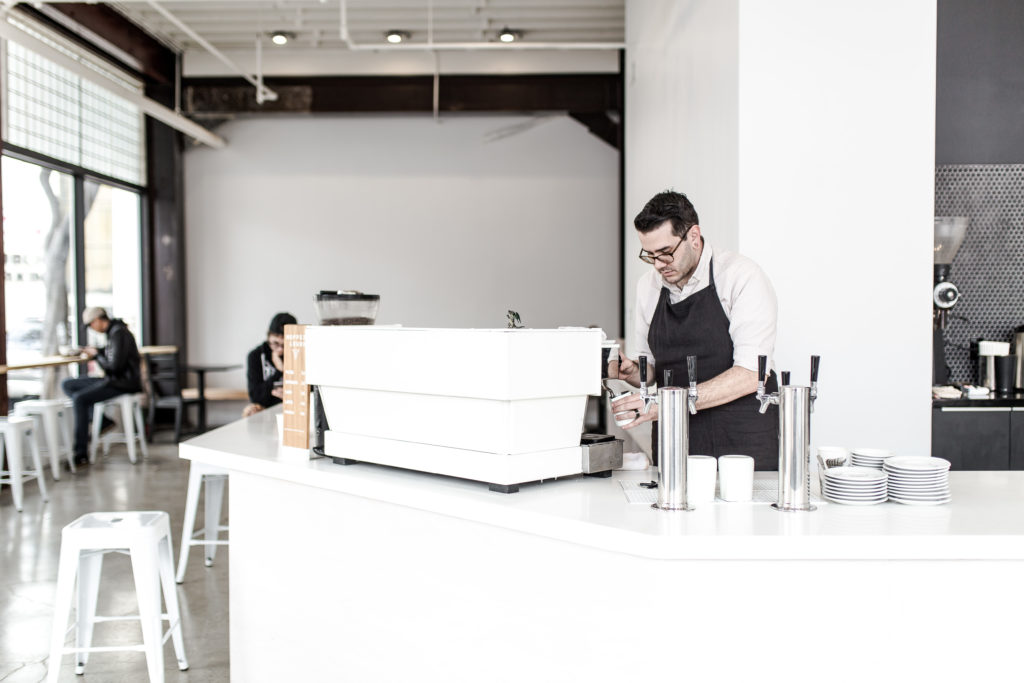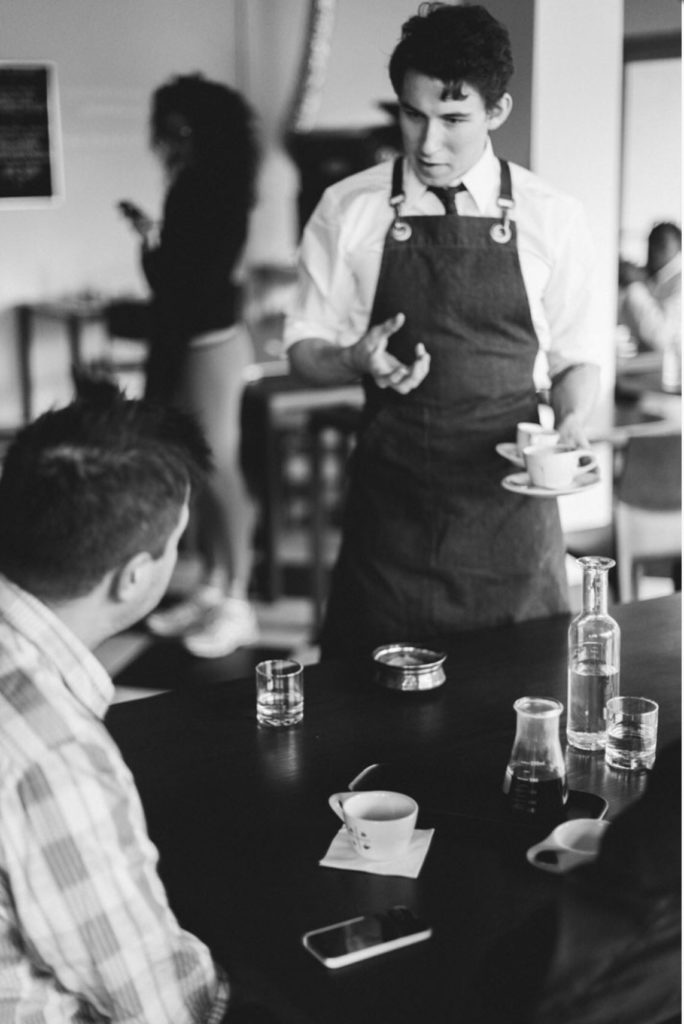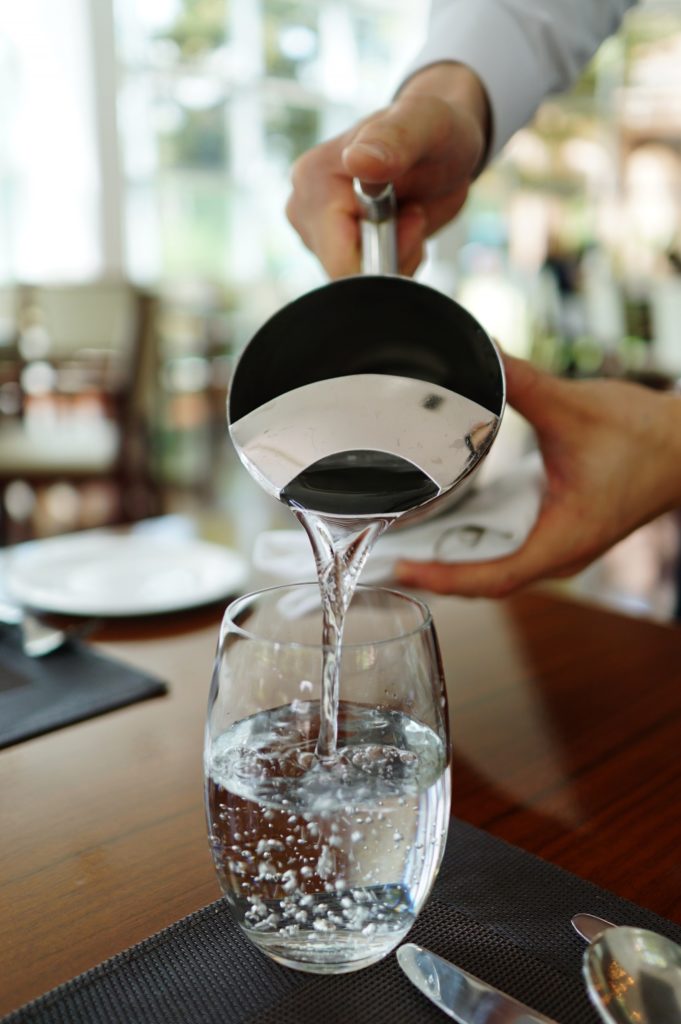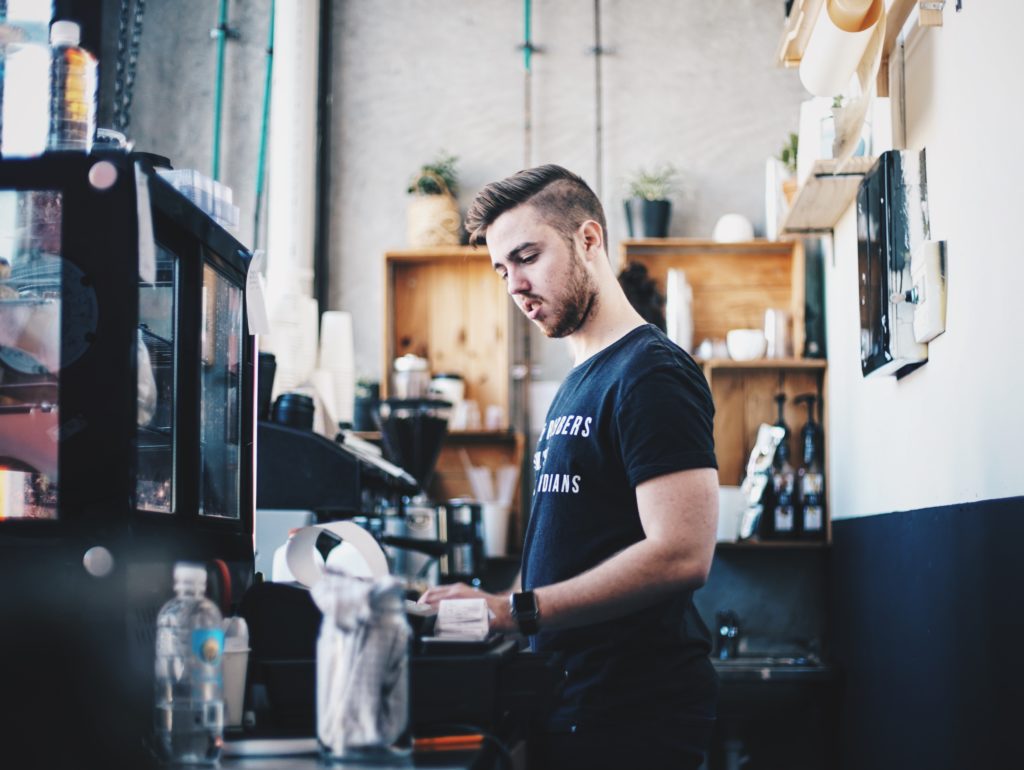
It’s Saturday morning. The all-powerful sun lights up the day, bringing life to the radiant blue of the Melbourne spring sky. Birds are singing, cars are starting and the bustle begins as the city dwellers go about their day. For me it’s a rare weekend day off and, as any barista would attest, it begins by enjoying a morning coffee prepared by someone other than oneself. I remember this morning from a number of years ago so vividly. I was treated with a simple, yet unforgettable experience and began to truly realise the importance of quality service. I was walking to a cafe that had been recommended to me by a colleague, I had heard a number of other positive things about this particular institute so I was both excited as well as slightly apprehensive, hoping that the experience would live up to the hype.
As I describe the events that unfold they will no doubt read oh-so simply, and in essence they are in fact just that simple, but the execution of these fundamentals are unfortunately so rare in daily service interactions that their impact can be extraordinary. I arrived at the establishment only to be greeted by what can be best described as a mecca of coffee klatsches. In typical Melbourne coffee culture style, every table was full and waddles of caffeine hungry patrons gathered outside, patiently awaiting for their takeaway drinks.
 Skeptical of my chances for a table I entered the building and stood by the ‘please wait to be seated’ sign. I hadn’t had chance to glance the glorious space when a server, arms full of plates, had appeared out of nowhere to great in me passing, assuring that I would be seen shortly. I only had chance to quickly catch sight of the brew bar and espresso bar, watching the baristas shift coffees, whilst still engaging with inquisitive customers, before I was greeted by a smiling host who showed me to a small table for one. General chit-chat masked the actions of the server, a menu was placed in front of me and a water glass was poured, then as per my request, I was left to peruse the options now before me.
Skeptical of my chances for a table I entered the building and stood by the ‘please wait to be seated’ sign. I hadn’t had chance to glance the glorious space when a server, arms full of plates, had appeared out of nowhere to great in me passing, assuring that I would be seen shortly. I only had chance to quickly catch sight of the brew bar and espresso bar, watching the baristas shift coffees, whilst still engaging with inquisitive customers, before I was greeted by a smiling host who showed me to a small table for one. General chit-chat masked the actions of the server, a menu was placed in front of me and a water glass was poured, then as per my request, I was left to peruse the options now before me.
Like I said, this all seems quite simplistic, but I couldn’t help remember the amount of times I had been to other places and been lost in the chaos of a busy morning service, being rushed to a table and left with a menu without as much as some eye contact.
Comfortable in my surroundings, I felt that the team was there to aid me in getting the most out of my visit and this was confirmed when the server returned to help with my coffee order. Clearly and concisely the available offerings for espresso and filter were riddled off, including origin, farm/region and a few tasting notes, all conveyed with enthusiasm and some welcome bias. Again I reminisced on previous encounters, times where servers had no idea what alternate coffees were available and any descriptions of flavour were solely from the barista. All of this went unnoticed at the time, I was so swept out of regular mind state(default) and instead just enjoying the present moment, it was only until after as I recalled on this experience, that I realised how poignant it was. The power of great service was revealed to me, when harnessed it can be used to coax a customer into comfort, bliss and an increased perception of quality.

To achieve a desired quality of service each person will have their own list of criteria to monitor themselves by, needless to say this will differ person to person given individual (person or business) goals of service. These goals first need to be laid out, prioritised, and then distributed amongst the service teams.
What I have noticed when discussing ideas for service with peers and colleagues is that most points are agreeable, after all we tend to think quite alike and have the same end goal in mind; differences in opinion however, in my experience, have been found when placing the importance of each ‘service criteria’ on a spectrum.
This spectrum I refer to helps to prioritise techniques and actions (least important – most important) in the service space when accommodating customers. Having a great team is essential for creating these systems for service as you can really debate and subsequently nail down the most efficient and effective way to award the best service possible, all the while engaging the team in the decision making process and creating shared goals. Whoever thought your high school teacher was speaking wisdom as they constantly harassed you to write down your goals for each year.
 Moulding service to the wants of each customer can be difficult and takes practice. Right from the moment a budding coffee enthusiast walks through the door, or a caffeine hungry zombie clambers into the space a good service team will assess the subject like a meticulous TSA agent quickly deciphering the needs of the customer and tailoring their interaction accordingly. Being effective in this analysis can create personability with each customer and this can be the deciding point for their future return. Like any first impression, greeting a customer can really set the course for the remaining engagement, that is why it is essential evoke affability and professionalism. This of course will shape how you want to carry out this ‘welcoming stage’, causing one to think of spacing or ‘staging’ right through to even a common language that would be best adopted by the team (again quality and consistency is imperative, which is why creating these systems with a team can be more effective). This same adaptive service style must continue throughout the remainder of a customers visit, watching to see if customers are engaged in conversation amongst themselves or seem intrigued by the menu for example will require two very different interactions.
Moulding service to the wants of each customer can be difficult and takes practice. Right from the moment a budding coffee enthusiast walks through the door, or a caffeine hungry zombie clambers into the space a good service team will assess the subject like a meticulous TSA agent quickly deciphering the needs of the customer and tailoring their interaction accordingly. Being effective in this analysis can create personability with each customer and this can be the deciding point for their future return. Like any first impression, greeting a customer can really set the course for the remaining engagement, that is why it is essential evoke affability and professionalism. This of course will shape how you want to carry out this ‘welcoming stage’, causing one to think of spacing or ‘staging’ right through to even a common language that would be best adopted by the team (again quality and consistency is imperative, which is why creating these systems with a team can be more effective). This same adaptive service style must continue throughout the remainder of a customers visit, watching to see if customers are engaged in conversation amongst themselves or seem intrigued by the menu for example will require two very different interactions.
This brings me to the nitty-gritty of coffee service, in particular, communicating the coffee menu and relevant information. This is the main reason for writing this piece in fact, as over the last few months I have really noticed a lack of service quality in this area. In the case of a specialty coffee venue, if a barista doesn’t know the process of the coffee they are serving or the composition of the blend they are using, or a member of the service team doesn’t know what the single origin offer is today or tries to sell the Kenyan offering as an extra hot soy something, then this is simply not good enough. And let’s be honest, it is not hard to get this right is it? It’s not as if we are requesting the same level of intensity as wine servers, who need to have knowledge on an entire menu including reds, whites, sparklings, regions, varietals, oak levels and flavours. If we want to be aligned at the same professional standard as the wine industry, then we better lift our game.

So what is essential information for coffee service? Again we first must refer back to my previous point regarding a tailored approach to each customer, understanding that some customers just want their caffeine fix. This is more than ok, the last thing this aforementioned customer wants at 6:30am is a barista chirping on about jasmine aromas; instead nurture them into the cold reality of morning, giving them what it is they most desire, a damn fine coffee. Equally so, we must be alert to the inquisitive coffee enthusiast who wants to explore, learn and converse.
Encouraging this sort of conversation with customers is essential for spread of specialty coffee, but far too often this discourse is conflated with pretentiousness, elitism or, on the other end of the scale, a lack of knowledge on the part of the barista. It’s a hard knack to grasp, but getting customers excited about coffee is an effective step in creating strong relationships that will result in better business. Baristas need to be well versed in the coffees they are serving, not only understanding their own choices as a barista but also processing type of each coffee and an ability to communicate the difference in processes (what each entails and how this effects cup character).

Amongst this knowledge a barista should also understand how the terroir of each coffee being served might effect flavour, how roasting has been used to bring certain qualities forward and of course some information on sourcing, to ensure conscious consumers of a sustainable purchase despite the lack of certifications. Needless to say this information need not be riddled off in excess to a point of nonsensical drab, but rather, a barista can condense it into key points to help a customer understand more about their complexity of coffee production, the source of flavour and help with the choice of coffee. You may have noticed recently, your daily coffee being served accompanied with a little card companion. Their general aim is to easily convey terroir background and flavor profiles, providing the customer with the comfort to digest information at their will. Although I think this is a great idea in allowing customers to engage at their preference, it can unfortunately lead to laziness in the staff involved.
These cards, beneficial as they are, should be used as an aid rather than a replacement in the pursuit of coffee communication. Servers (or waitstaff) in specialty coffee shops too have a responsibility to understand the product they are selling. Such an in depth understanding is not as necessary as for a barista, but being able to understand what coffees are available, where they are from, how they taste and how they would be best enjoyed is imperative for good service. In many establishments, servers are not baristas and vice-versa, therefore the service team is responsible for the making customers feel comfortable, uniquely cared for (through tailored rapport) and opening up initial conversations about coffee, all in all the service team, in many instances, are the face of the establishment.

It would be fair to say that coffee, in it’s current iteration, is tasting better than ever. Specialty coffee can be found in every major city and even in most large townships. Through advancing technology, coffee quality will continue to get better and as it does sloppy service will no longer suffice. Even now it is clear that quality alone is not enough to keep customers coming back for more. Great service has the ability to provide customers with a home away from home, to engage in discussions about coffee with people at various stages of their coffee journey and to showcase our industry at the forefront of progressive, culinary experiences. So let’s do it properly.
Written By Michael Munroe (michaelmunroe.coffee / Instagram: @michaelmunroe.coffee)









NO COMMENT